#HIroshi Imai
Text
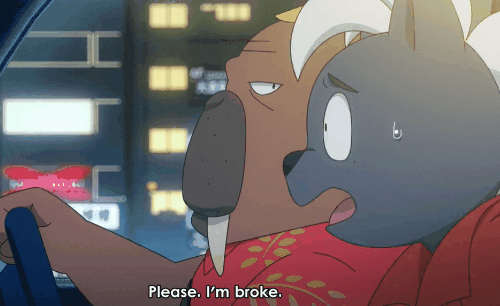
odokawa + imai gif for @growth-system-hub !
15 notes
·
View notes
Text
Fanarts de oddtaxi que hice durante el verano de este año uwu






#my art#fanart#traditional art#odd taxi#shun imai#hajime tanaka#hiroshi odokawa#shiho ichimura#yano haruhito#togo sekiguchi
20 notes
·
View notes
Text
All my Oddtaxi Fanart!
HE'S GONNA HAVE HIMSELF A TIME

Hiroshi Odokawa in Adventure Time's artsyle,
Hajime Tanaka in Naomi Iwata's (the guy who made Midnight Horror School and Gregory Horror Show) artstyle
Shun Imai in Moral Orel artstyle
Shiho Ichimura in South Park's artstyle
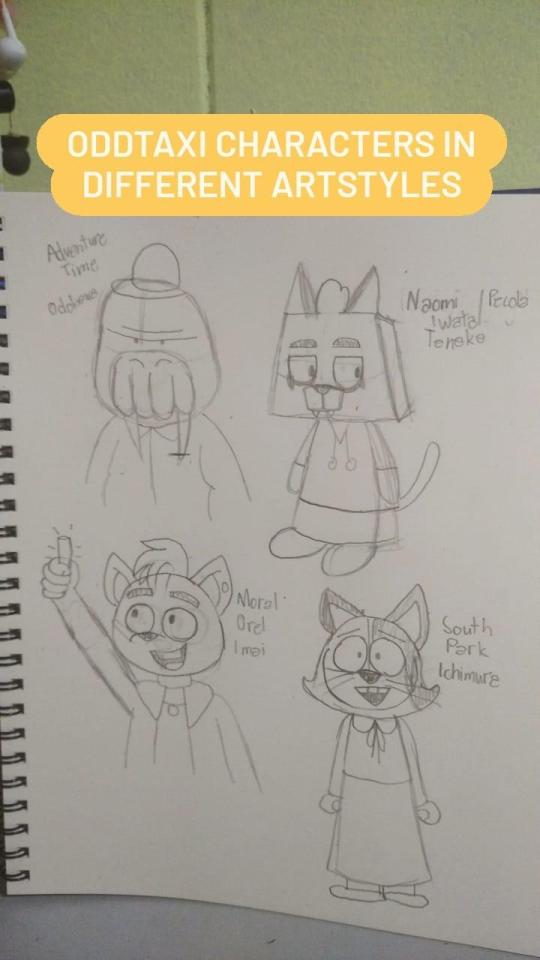
I'M SORRY THAT I MESSED UP IMAI'S ORANGE STRIPE!! But, it was fun animating the Oddloop dance with my two favs!

Yes, it's based on SpongeBob

Ooo! Toy Car reveal! And Tanaka? Yes please!!! Yes, I collect Hot Wheels, Tomicas, Matchbox, and Majorette cars. In the pic, that's a Majorette Toyota Altis Taxi! Aaaaa I know there's a plain Toyota Corona (Odokawa's taxi) diecast from Tomica but I'm saving up some blue bills for a tablet!

Swag
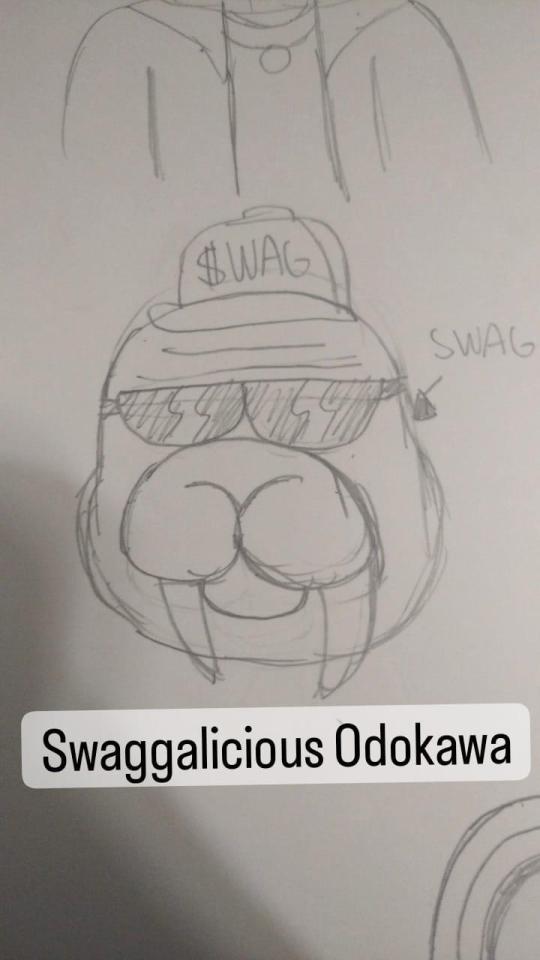
(okay I did Friday Night Funkin' Yano out of irony)

#artists on tumblr#anthro#anthro artist#furry#cute furry#tanaka odd taxi#furry character#shiho odd taxi#shiho ichimura#odd taxi#oddtaxi#hajime tanaka#shun imai#imai odd taxi#hiroshi odokawa#Odokawa odd taxi#traditional art#sketch#doodle#furry anthro#furry animation#anthro art#drawing#flipaclip
11 notes
·
View notes
Photo
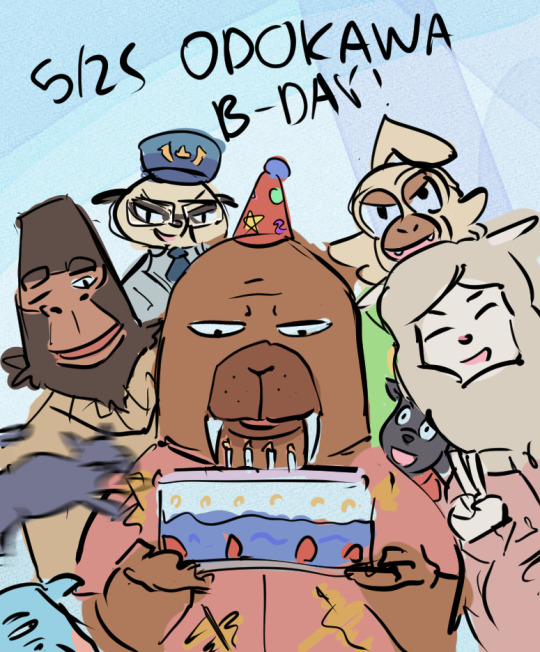
belated birthday to our favorite walrus
#OddTaxi#please watch oddtaxi#odd taxi#hiroshi odokawa#odokawa#birthday#mihoshirakawa#goriki#daimon#kakihana#shun imai#kabasawa#i only wish nothing bad happens to any character in this picture
33 notes
·
View notes
Text
youtube
Kimi ni Todoke: From Me to You Season 3 | Official Trailer #1
youtube
Series Highlights
Season 3 of From Me to You: Kimi ni Todoke will stream on Netflix worldwide in August 2024


Key visuals
Cast
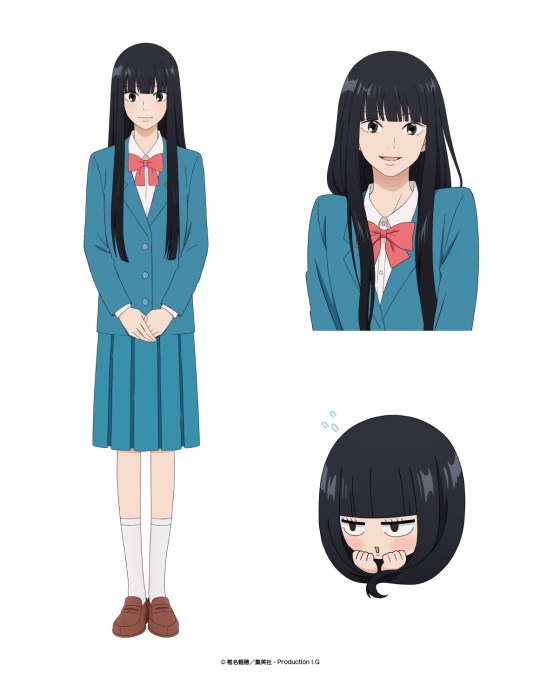
Sawako Kuronuma as Mamiko Noto
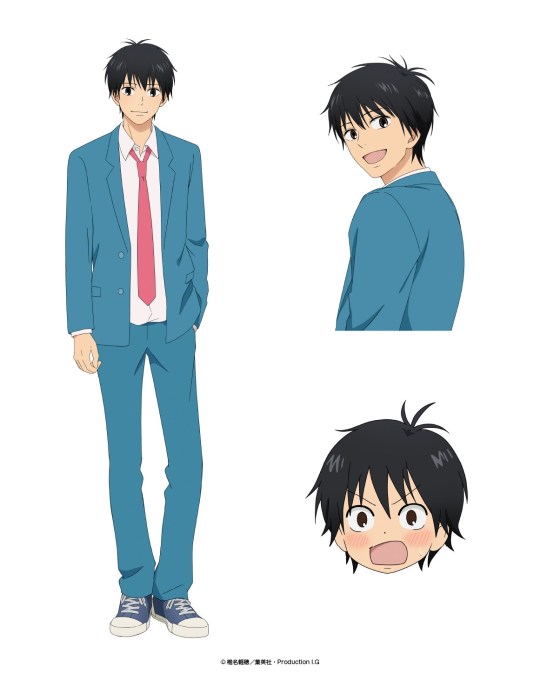
Shōta Kazehaya as Daisuke Namikawa

Miyuki Sawashiro as Ayane Yano
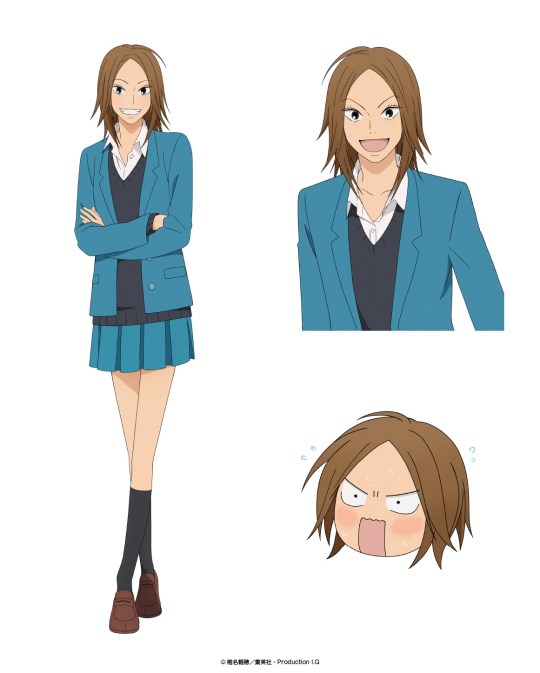
Yūko Sanpei as Chizuru Yoshida
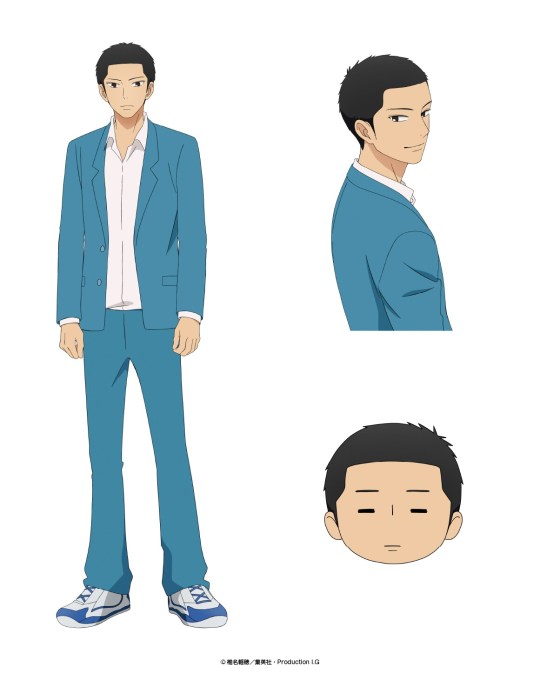
Yūichi Nakamura as Ryū Sanada

Mamoru Miyano as Kento Miura

Yūki Ono as Kazuichi Arai (Pin)

Aya Hirano as Ume Kurumizawa
Staff
Original Creator: Karuho Shiina
Director: Kenichi Matsuzawa
Series Composition: Tomoko Konparu
Script: Michiko Yokote, Tomoko Konparu
Music: S.E.N.S.
Character Design: Keiko Ōta, Yuka Shibata
Art Director: Yūsuke Takeda (Bamboo)
Chief Animation Director: Miho Daidōji, Yuriko Nagaya
Sound Director: Tomoaki Yamada
Cgi Director: Hitomi Sumino
Director of Photography: Hiroshi Tanaka
Art Setting: Kazushige Kanehira
Color design: Emiko Ueno
Editing: Daisuke Imai
Main Animator: Kenji Irie
Prop Setting: Hana Okutani, Natsumi Yamato, Yui Kazuyama
Animation Production: Production I.G
Background Art: Bamboo
Sound Production: Sound Team Don Juan
#From Me to You#Kimi ni Todoke#KimiTodo#Production I.G#Netflix#anime#TV anime#semi late post#long post
63 notes
·
View notes
Text




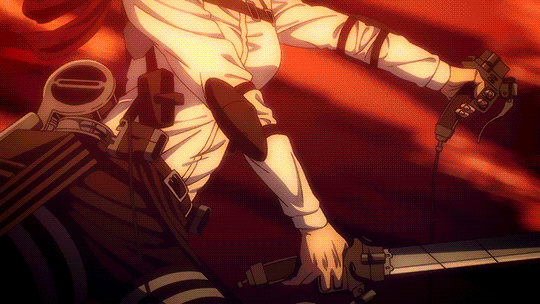


Attack on Titan S04E30 - Act 2 - "A Long Dream"
Episode Director(s): Yuichiro Hayashi (林 祐一郎) & Tokio Igarashi (五十嵐 季旺)
Chief Episode Director: Jun Shishido (宍戸 淳)
Screenplay: Hiroshi Seko (瀬古 浩司)
Key animator: Arifumi Imai (今井 有文)
Storyboarder(s): Arifumi Imai (今井 有文) & Yuichiro Hayashi (林 祐一郎)
#ARIFUMI GODDAMN IMAI RETURNS FOR ONE LAST GO IN THE SERIES#GLORIOUS LONG TAKE#Attack on Titan Season 4#shingeki no kyojin#snkgraphics#snk spoilers#aot spoilers#levi ackerman#Mikasa Ackerman#Armin Arlert#Eren Yeager#long post#my gif#thank you and bless all the wonderful hard working animators for bringing this finale to life#And I pray they are all fairly compensated
121 notes
·
View notes
Text
Interview: Ongaku to Hito and Sakurai Atsushi - Ichikawa Tetsushi x Kanemitsu Hiroshi, Part II
This interview is on pages 52-57 of the magazine. Footnotes are included in numbered parentheses and can be found at the bottom. For Part 1 of this interview, click here.
~~~~~~~
Ichikawa: It may have been a shock, but in short, [BUCK-TICK's] material elevated. Really, because they were able to turn their work into art, we can grasp now how they were able to bring forth a decadent rock masterpiece like 21st Cherry Boy. Although that kind of dark decadence is seen as a negative, they established it as an excellent form of entertainment, which is fantastic. When I listened to that, I wondered, “Why has Sakurai made a breakthrough to this point?” What did you make of that?
Kanemitsu: I think he was able to gradually create distance between himself and the band - in a good way. It wasn’t because their relationship had worsened, and there were still times where they’d be up until the morning drinking, but, as you might expect, after nearly 20 years had passed since they debuted, their relationships with people had expanded too, right? When that happened, this sort of scene, where Imai-san would finish an interview and the other 4 were drinking while they waited for him, it almost completely disappeared. This positive sense of individualism is how BUCK-TICK came to be born.
Ichikawa: I see. In the 21st century, I was listening to the works of B-T as a fan only, so I didn’t bear the weight of that darkness.
Kanemitsu: What I call acting out the darkness, that elevated their work as entertainment. But normally, when you have this individualism come to be, it leads to actively pursuing solo activities…and that can be troublesome, certainly.
Ichikawa: That’s the self-indulgence I talked about earlier. (laughs) When that happens in a regular band, they disband and it’s over. Suddenly some new thing starts, and the other members end up not knowing what to do. But Sakurai ended up feeling guilt about this, because he was a man with a kind heart. Thanks to that, the unique worth they had as a band that continued for 35 years with its original members came to be.
Kanemitsu: In what ways did you feel Sakurai-san’s kindness?
Ichikawa: Well, in many ways, the Sakurai Atsushi I carry with me is still a yankii(1), you know, a good-looking yankii full of chivalry. We talked about the time when his mother passed before, but there is no shortage of that kind of material. For instance, the launching issue of Ongaku to Hito. I asked Sakurai to be in it as well, and even though it wasn’t around the timing of any [album] release, he said, “Well, since it’s a magazine Ichikawa-san is creating, I’ll do it”, and in the middle of a national tour he came back to Tokyo from Numazu after the concert was over, and it was after midnight at an oden food stall in Sendagaya where we had a no-makeup photoshoot and interview. He was a man who could simply do such things.
Kanemitsu: What about Sakurai Atsushi made us so charmed by him, do you think?
Ichikawa: Hmmm…his face?
Kanemitsu: Well, that’s some brutal honesty!(2) But certainly, it was important. (laughs)
Ichikawa: Wahahaha. There’s that issue with Sakurai Atsushi on the cover where he’s wearing an unremarkable white shirt and has a slight smile, right?(3) That one is among my top three favorites. For some reason, it was a time where there weren’t any interesting releases, and there was no content to be had during this lull, so we ended up in a tight spot for an artist to put on the cover. To be honest, we made the offer to Sakurai like, “heeeelp!”, and I was grateful when he readily consented. They also didn’t have any releases coming up, so I suggested we try a risky(4) cover with no decadence, where Sakurai had a casual appearance and is looking into the camera with a smile; he had also become more concentrated(5) at that time and said, “Let’s do it!”
Kanemitsu: That’s why he cut his hair without anyone’s permission. (laughs)
Ichikawa: I’m glad we didn’t go that far with it. (laughs) But really, Sakurai Atsushi could not be detached from my magazine. There were always plenty of guys skillful at conversation, but I have never met another frontman who, even though he wasn’t good at speaking, could expose his inner thoughts to such a point. Of course, there were also those with negative feelings, like, “It’s all just to tickle the B-T girls’ fancies”, but I hoped, even without him knowing, if we could drain the low-water swamp called Sakurai Atsushi, something amazing would happen. I wanted to do something with this man. It was the same for you too, right, Kanemitsu?
Kanemitsu: I didn’t have that “I want to do something”. But I did have something like a maternal instinct. (laughs)
Ichikawa: (wry laugh) I understand that too. You can’t leave him alone.
Kanemitsu: Because at some point, there were only a few articles about the album releases outside of ours.
Ichikawa: Why was that? As I said earlier, during my time, he spoke frantically as if it was needed to confirm something to himself - so in other words, something must have changed where he could become more self-contained.
Kanemitsu: It was like Sakurai-san created his own style. As though, dressed up in decadence and gothic imagery, he tried to act out his ideal Sakurai Atsushi.
Ichikawa: The same as kabuki. The great name of “Sakurai Atsushi” was focused as he would be in the traditional Japanese arts.
Kanemitsu: Yes, yes. I think that was a good thing.
Ichikawa: It finally makes sense to me. So that’s why it happened. That Prince of Darkness character was created.
Kanemitsu: There was what you call the Prince of Darkness character, but he also loved cats, which brought out his playful face. If such a person were to appear on TV with Shiina Ringo, everyone would be hooked.
Ichikawa: A rare creature, really. (laughs) This may be inappropriate, but it seemed to me that Sakurai could only bring the curtain down(6) on Sakurai Atsushi in the way he did, or by going into a life of seclusion, unknown to anyone. Because he was carrying such sin(7) with him.
Kanemitsu: Well, as someone who saw him from the 21st century point of view, I feel that he’d aged well in this way, and he wanted to enjoy the rest of his life happily. It’s just that he was a sensitive person, so he was affected by things like children being displaced by war, the oppression of people based on gender, and so on, and when he tried to get closer to the emotions of the weak, he would be forced to remember his own pain, so I suppose in the current era, it was hard for him to live…that’s what I think, anyway.
Ichikawa: Hearing the talk about the Sakurai Atsushi of the 21st century from Kanemitsu today, it makes sense now. For me, who only knew the Sakurai of the 20th century, the Sakurai of the 21st century is like a different person. I was very fascinated with him all the same. I don’t mean this in a bad way, but it’s like he established a whole separate persona. How can I say this…maybe I could call it guilt. I could see his guilt so clearly through his songs in the 20th century, and it was made invisible in the 21st century. And, invisible things aren’t bad ones. Because that just shows how accomplished he was at fulfilling his role as Prince of Darkness. That’s also how he elevated to being a charming big name.
Kanemitsu: As a musician, an artist, the purity of his expression had reached a level so high as to be incomparable [to anyone else].
Ichikawa: His skill in the 21st century clearly went up. But, although the Sakurai Atsushi of the 20th century was still a work in progress, that progress had turned into a serious dead end that was plain to see. So there were many people who were able to empathize, and I think he himself, the band, the media, and the fans all came together, able to become a community with a shared destiny. It’s strange, but in other media, BUCK-TICK was just shown as a cool band, right? However, at Ongaku to Hito, it wasn’t like that in either the 20th or 21st century.
Kanemitsu Because we got to see them as 5 people with 5 different styles of character.
Ichikawa: In other words, they’re “Osomatsu-kun”(8).
Kanemitsu: Hahahahaha!
Ichikawa: When I was doing it, they were “Osomatsu-kun”, and while Kanemitsu’s been doing it they’ve been “Osomatsu-san”. Their appearance between the Showa and Heisei eras was totally different, but the original people were the same. In both the 20th and 21st centuries, Sakurai was Sakurai, and his foundation and attitude didn’t change, only his appearance from that of an unusual self-deprecating man to the Prince of Darkness did; as a result, he was popular in both cases. So, as Ongaku to Hito, speaking from our beginning, he is the person we should be the most grateful for, and he was the kind of man who made me feel like I had to include him in our publication.
Kanemitsu: He was. No matter how cool Sakurai Atsushi looked on the stage, everyone knows that he actually also had these traits.
Ichikawa: Of course, with that presence, that appearance, and the look in his eyes, no one would know he was actually this cute and loveable character.
Kanemitsu: Through the medium of Ongaku to Hito, you and I wrote about those parts of him, so now everyone knows.
Ichikawa: That’s true…a long time ago, when I was doing a late-night Friday FM radio live broadcast, I had Sakurai on as my first guest. We were at the Satellite Studio in Ginza, and even though I hadn't asked them to come, Takuro and Hisashi [of GLAY] came. We finished at 3 AM and the 4 of us were drinking when Sakurai said, “Will you come to my place?”, which was unusual. When we went there, the windows - all of the windows - had these pitch black curtains on them, it was like being at a planetarium. (laughs)
Kanemitsu: Hahahahahaha!
Ichikawa: We drank in that dark room until we eventually were struck by sleep, but even when I woke up, it was pitch black and I had no idea what time it was. (laughs) When the sun was at its peak, I woke those 2 [from GLAY] up and they went home, but while that was happening, Takuro said to Hisashi, “If you’d told me 10 years ago that I’d go to the home of BUCK-TICK’s Sakurai Atsushi and drink together with him, I never would have believed you”, and I’ve never forgotten that. It was purely moving, emotionally.
Kanemitsu: Everyone wanted to become like Sakurai Atsushi.
Ichikawa: It must have been a dream for them. However, it’s a dream that no one could achieve. This sounds misleading, but I think you have to want to be like Yoshiki [of X JAPAN], if you’re going to abandon yourself to despair(9). (wry laugh) But no matter what gimmicks you make use of, you’ll never be Sakurai Atsushi. And for better or worse, it was tough.
Kanemitsu: I’ve said this many times, but him finding that gothic style was big.
Ichikawa: The gothic atmosphere seemed like maybe the one he was most comfortable in. The decadence created a kind of surreal and abnormal worldview. But Sakurai Atsushi himself was not abnormal at all, nor was he trying to intentionally deviate strongly from what’s accepted(10). It was just the suit of armor(11) that best fit when he was confronting the world, definitely.
Kanemitsu: It was Sakurai Atsushi’s suit of armor, wasn’t it. But whether he ended up putting it on or not, he empathized with people’s sadness, and he was a person who could shed tears. And because that seeped out, everyone loved him. Those feelings [of empathy] were expressed in what became his last album, Izora.
Ichikawa: I see. Well, perhaps he would have continued on expressing it, if he could.
Kanemitsu: I really think so. There were yet many things he could do, and many he would have wanted to do.
~~~~~~~
Footnotes:
(1) I think most people into this scene are familiar with this term, but in case you aren’t - yanki/yankii refers to a young delinquent, usually one who dresses in a sort of street/biker style.
(2) If someone has ever said to you, “wow, tell us how you really feel!”, it has the same sort of feeling to it as that, although a bit more polite since Ichikawa is the elder of the two, lol.
(3) I believe he is referring to the January ‘95 issue cover, based on his description.
(4) Risky in the sense of something not usually done. “Nikopachi” is the type of photography he describes, and online sources generally spoke negatively of it as something not befitting professional photography.
(5) Literally “boiled down”. I think this is a reference to paring back his visuals from what they were earlier in their career.
(6) This is a metaphor for Sakurai’s passing - but I liked the nuance of his wording and tried to retain it.
(7) This word really does not translate well - in different contexts it can be sin, guilt, karma. I translate it again as “guilt” below as it’s more befitting the context, but in all cases here, it’s a sort of heavy emotional load brought upon oneself. My husband’s preferred definition translated to “a living with the burden of past wrongdoings and feeling a sense of remorse”.
(8) Per Wikipedia: a comedy manga that revolved around of group of brothers who cause all sorts of mischief.
(9) I asked for more clarity on this - what he is getting at is, it’s possible, if you really want to, to become like Yoshiki, but no matter what you do, you can never become like Atsushi.
(10) The direct translation for this was “be a heretic”, but heretic is a loaded word in English, and this does not have any Christian overtones.
(11) He specifically says “mobile suit”, as in the suits from Gundam.
50 notes
·
View notes
Text
odd taxi characters react to you having a tapeworm infection 💖
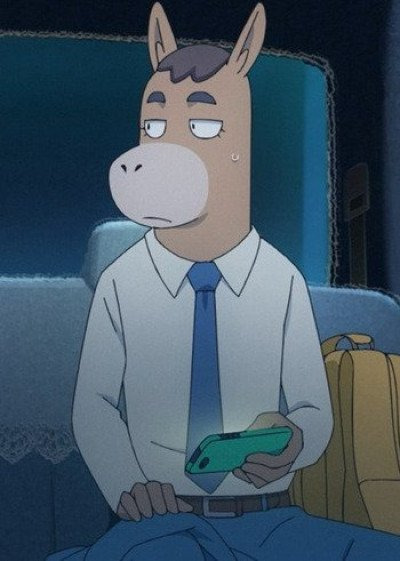
Atsuya Baba: hahaha!... you're joking right?
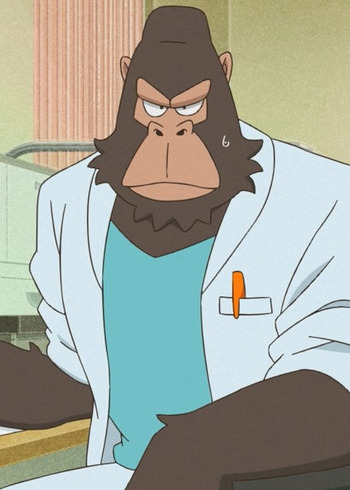
Ayumu Gouriki: im sorry, but this is the only way we can cure you.. *pulls out gun*

Dobu: LMFAO

Donraku Shofutei: *stares at you in disappointment*
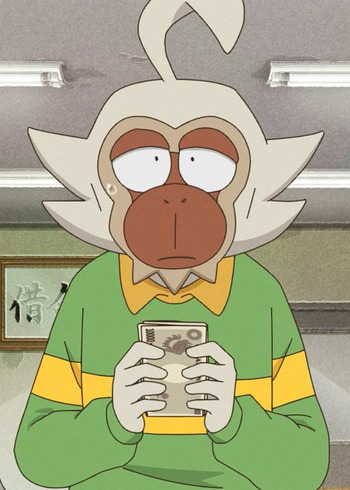
Eiji Kakihana: ermm.... you could have told me earlier.....
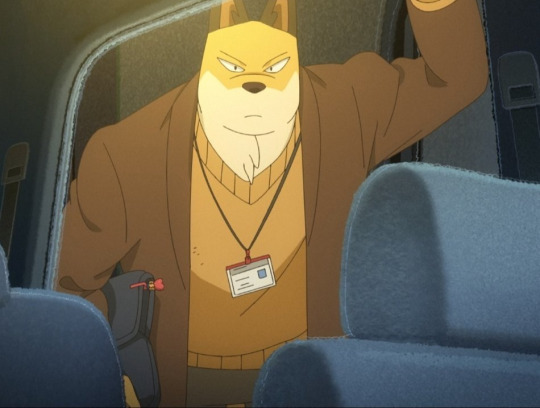
Fuyuki Yamamoto: **goes beast mode** IM the only one allowed in your guts!!!!!!!!!!!! *growls*
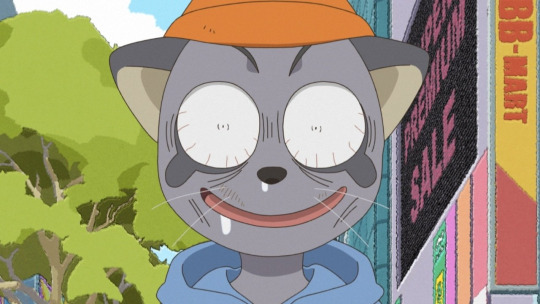
Hajime Tanaka:

Hiroshi Odokawa: damn, i dont care.
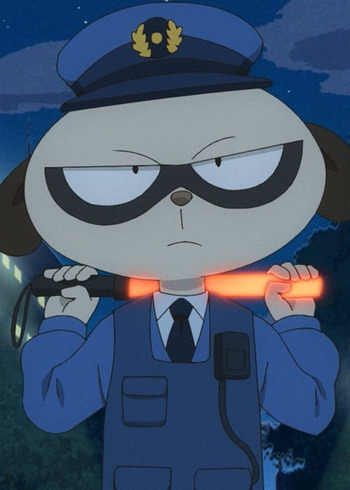
Kenshiro Daimon: **MAULS YOU ON SIGHT**

Koshiro Daimon: *turns away to hide his blush* i’ve always wanted a partner with a tapeworm….

Kensuke Shibagaki: uh... okay?
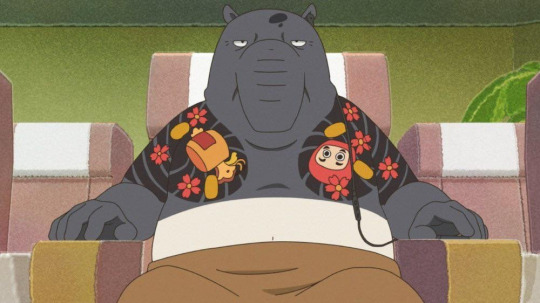
Kuroda: What.

Miho Shirakawa: **SCREAMS AND KICKS YOU CAPOERIA STYLE**

Rui Nikaidо: damn bitch fr?

Satoshi Nagashima: cringe

Sekiguchi: shut the fuck up bitch *starts beating you up*

Shiho Ichimura: just take a bath and you'll be fine!

Shun Imai: *slurps the tapeworm out of your mouth and into his stomach* mmm!! yummy snack. thanks [y/n]!

Taeko Harada: well.. at least you have a friend now?

Taichi Kabasawa: tch…. thats so fucking unepic. we’re through [y/n]. you lose the internet. kek
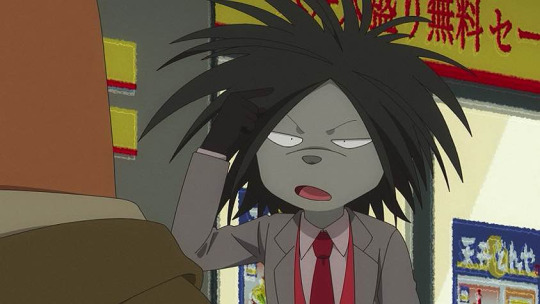
Yano: same *starts rapping*

Yuki Mitsuya: omg same! i named mine kylie lol!
spoilers on this part lol dont click if you didnt watch the entire oddtaxi anime

(the actual) Yuki Mitsuya: *starts backing away slowly from you*
#oddtaxi#odd taxi#this was based on a different tumblr post#also warning spoilers#please dont take this seriously#shitpost#long post#h#shitter#save
23 notes
·
View notes
Text
youtube
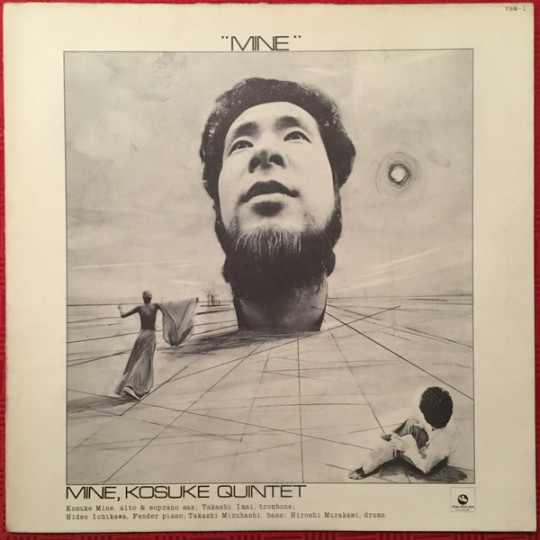

Kosuke Mine Quintet - Mine (Three Blind Mice, 1971)
Kosuke Mine: Alto Saxophone, Soprano Saxophone
Takashi Mizuhashi: Bass
Hiroshi Murakami: Drums
Hideo Ichikawa: Electric Piano [Fender]
Takashi Imai: Trombone
#1970s#Japan#Kosuke Mine Quintet#Jazz/Hard Bop#Post-Bop#Modal#Contemporary Jazz#Fusion#Three Blind Mice#1971#week 30-2023#Youtube
4 notes
·
View notes
Text
Ranking of Kings Episode 9: The Queen and the Shield
Written by Taku Kishimoto
Storyboarded and directed by Arifumi Imai
Animation directed by Hideyuki Arao, Tomoyuki Kitamura, Rena Hiura, Atsuko Nozaki, Shin Ogasawara, Itsuki Tsuchigami, Koki Fujimoto, Satoru Murata, Takeshi Maenami, spike, Hiroshi Masuda, Arifumi Imai & Shunsuke Aoki

0 notes
Text
F1 EXPLAINS: Why tyres are crucial to success in Formula 1
After a month-long summer break to recharge the batteries and get ready for the second half of the season, the F1 Explains crew are back with an informative breakdown of another key factor to success in the sport: tyres.
New-for-2023, F1 Explains is hosted by Katie Osborne and Christian Hewgill and sees the pair answering a different set of questions each week, with the aim of giving fans the inside line about how F1 works.
F1 NATION: Verstappen goes for gold again on home soil with another F1 record in sight – it’s our Dutch GP preview
This week, the spotlight is on tyres, which are one of the most important parts of an F1 car, and how getting the best performance from them requires tireless work from drivers, teams and engineers.
This feature is currently not available because you need to provide consent to functional cookies. Please update your cookie preferences
Joining Osborne and Hewgill for the conversation are three tyre experts: former F1 racer Jolyon Palmer, Mario Isola, motorsport chief for F1 tyre supplier Pirelli, and McLaren’s Director of Race Engineering, Hiroshi Imai.
Palmer explains why tyres are so important to drivers; Isola tells us why different tyre compounds are chosen for each race weekend and why F1 tyres wear out; while Imai runs through how F1 teams choose which tyres to use and the tyre rules they must not break.
BEYOND THE GRID: Heinz-Harald Frentzen on being Germany’s F1 cult hero
F1 Explains has joined in-depth interview podcast Beyond The Grid and magazine show F1 Nation in the official F1 podcast line-up, and you can listen to the latest episode in the player above or by clicking here.
via Formula 1 News https://www.formula1.com
1 note
·
View note
Text
Mas arte de oddtaxi que hice recientemente :3

16 notes
·
View notes
Photo




FULL FOCUS
MCLAREN APP
#mclaren dropping content like hot cakes#mclaren#william joseph#jose manuel lopez#jon malvern#hiroshi imai#f1#formula one#bahrain gp 2021#p1tstop stuff
44 notes
·
View notes
Video
youtube
TRIGUN STAMPEDE - Official PV #2 (with English captions)
Trigun Stampede will premiere in January 2023.

Key visual
Cast additions
Sakura Ando as Meryl Stryfe
Kenji Matsuda as Roberto De Niro
Yoshimasa Hosoya as Nicholas D. Wolfwood
Previously announced cast members
Yoshitsugu Matsuoka as Vash the Stampede
Junya Ikeda as Knives Millions
Tomoyo Kurosawa as Young Vash
Yumiri Hanamori as Young Knives
Maaya Sakamoto as Rem Saverem
Staff
Director: Kenji Muto
Concept Designer and Character Concept: Kouji Tajima
Story Draft: Takehiko Okishi
Series Composition: Tatsurō Inamoto, Shin Okashima, Yoshihisa Ueda
Character Design: Kōdai Watanabe, Tetsurō Moronuki, Takahiko Abiru, Akiko Satō, Soji Ninomiya, Yumihiko Amano
Music: Tatsuya Katō
Chief Designer: Nao Ootsu
Set Design: Tomoyuki Aoki, Tomoyasu Fujise, Toshiyuki Sakae, Anri Jojo
Creature Design: Eiji Yamamori
Special Effects Design: Kiyotaka Oshiyama
CG Chief Director: Eiji Inomoto
VFX Art Director: Kensuke Yamamoto, Taishi Hayakawa
Color Design: Ken Hashimoto
Art Director: Yūji Kaneko
Screen Layout: Hiroshi Saitō
Director of Photography: Takashi Aoki, Ryudai Koshida
Editing: Daisuke Imai
Recording Mixer: Takahiro Fujishima
Sound Editor: Masatoshi Katsumata
Animation production: Orange
92 notes
·
View notes
Text



some odd taxis
#odd taxi#hiroshi odokawa#shun imai#rui nikaido#hii hiii guys#animals aren’t my strong suit but I’m trying
333 notes
·
View notes
Text
Interview: Ongaku to Hito and Sakurai Atsushi - Ichikawa Tetsushi x Kanemitsu Hiroshi, Part I
This interview is on pages 52-57 of the magazine. Footnotes are included in numbered parentheses and can be found at the bottom.
Part II of this interview can be found here.
~~~~~~~
From the establishment of the magazine in 1993 to the present day, we are proud to say that, in the 356 releases of Ongaku to Hito, Sakurai Atsushi had the highest number of appearances. Including things like live reports and columns, the count of appearances is close to 130 times. We feel that it’s probable that this number will never be beaten by anyone else. Now, you may be asking why a person such as Sakurai Atsushi was so loved by Ongaku to Hito’s editorial department for such a long time. And, why he, too, responded to us as he did. The first editor-in-chief, Ichikawa, who came to see the incomplete Sakurai of the 20th Century, and the third editor-in-chief, Kanemitsu, who saw the process of his expressive style come to completion in the 21st century, discuss together what Sakurai Atsushi was to Ongaku to Hito.
Kanemitsu: When was the first time you met Sakurai-san?
Ichikawa: When I was working as editor-in-chief in Nagoya for Town Magazine. I was working as the Western music critic, but it was a town magazine, so I thought we needed to do Japanese music as well.
Kanemitsu: It was right when the first Band Boom(1) was going on, right?
Ichikawa: Right. And at that time, there was an older promoter from Victor’s Nagoya Sales Office that had come to do this over-the-top promotion of these new bands. I had no interest in them, but the way he made his sales pitch was very skilled. He was like, ‘Even though they have this sort of gaudy visual style, the melody is like a tulip.” (wry laugh)
Kanemitsu: (laughs) It certainly had that scent to it in the early days.
Ichikawa: At the time of their debut, Sakurai Atsushi didn’t really have the basics down of being a vocalist yet, but then, don’t Japanese people love the sound of a natural bass voice with a slightly sweet quality to it? However, behind that, there were a lot of strange wailing guitars, and I ended up taking an interest in them; I decided to do an interview with them, and the ones who came were Sakurai and Hoshino.
Kanemitsu: The person who was playing the weird guitar wasn’t there! (laughs)
Ichikawa: Moreover, even though they came with their hair standing up and in their full stage gear, no matter what I asked the two of them, they would only nod their heads shyly in agreement; it was a situation where they were like a “fleet of silence”. That overwhelming difference was so funny.
Kanemitsu: And the next time was in Tokyo?
Ichikawa: At Rocking on Japan. After interviewing Imai, I was kidnapped by Roppongi’s BOO!WHO?WOO!, and that was where I drank for the first time with Sakurai. For the following month’s issue, we had planned to do it with Sakurai and Anii, but on the day of the interview, we received communication that Sakurai’s mother had suddenly passed away and he wanted to hurry back home to Gunma, so in Sakurai’s place, Imai was to do the interview. When I went to the scene of the interview, feeling sympathetic for the whole situation, for some reason, Sakurai was there.
Kanemitsu: What?
Ichikawa: I asked him, “What’s the matter?(2)” and he said, “I thought I should come to properly greet you and ask you to please excuse me [for missing the interview].”
Kanemitsu: A good person who really respects the social hierarchy.
Ichikawa: It’s a good story, right? (laughs) Even though this man is this sort of flashy frontman, he doesn’t talk much and acts seriously.(3)
Kanemitsu: I really think so too.
Ichikawa: And then, as early as the next issue, Sakurai did a 20,000 character interview.
Kanemitsu: …for the No Blood, No Tears magazine.
Ichikawa: Wahahaha. As you might expect, I suppose I couldn’t touch on anything regarding his mother. When we sat down and had a thorough discussion, he was bad at speaking, but trying with all his might to do it. What came from that was how his adolescence was a rather empty(4) time.
Kanemitsu: After he graduated from high school, he went to work in a factory, correct?
Ichikawa: Yes, that. At a car factory, the job he did was screwing parts together as they came through, but it was like he agonized over it, thinking, “…why am I continuing to do something like this?” That sort of difficult-to-express feeling can really pull the heartstrings of readers, I think.
Kanemitsu. That became the heart of Sakurai’s lyrics.
Ichikawa: Yeah. That’s where it begins, you know, the “What am I?” series. Understanding that there is something there, but not being able to explain it well. So it can only be written as lyrics and sung. In search of an escape, an endless journey of self-discovery began.
Kanemitsu: Interviews became Sakurai-san’s therapy.
Ichikawa: I was his therapist, or, like his infinite hitting partner for wondering about things to himself. At the interview location, through talking with me, he would organize his thoughts and then verbalize them. It was like this repeatedly. And we couldn’t google information like we can now, and in the first place, there wouldn’t be an answer anywhere even if we did google it. So we ended up with lyrics like “Namida ukabete Deca-dance (eng: “deca-dance with tears in my eyes”) in Maboroshi no Miyako, and the kids that listened to it wrote us letters while crying, asking, “What kind of dance is this?!” (wry laugh)
Kanemitsu: The fans, readers, and even he himself didn’t understand.
Ichikawa: I think it was just that, even if you couldn’t comprehend it, the emptiness that Sakurai carried drew everyone to him. Like something a person instinctively sympathizes with deeply.
Kanemitsu: At that time, Ongaku to Hito was laying the groundwork for the beginning of an idea to materialize for him.
Ichikawa: Ultimately. (laughs) However, I think he also perhaps didn’t completely understand it.
Kanemitsu: Agreed. Sakurai-san himself tried reading [Charles] Baudelaire’s “The Flowers of Evil” and said he was frustrated by the second page. (laughs)
Ichikawa: That’s right. But, I think he had this indulgence of, “I’m good in the darkness, the emptiness in me is obvious.” So I called Sakurai Atsushi, “The Appeal of Self-Deprecation.” That’s because the lyrics written by the Sakurai Atsushi of the 20th century had these desperate contents of “I’m no good, no good, I’m NO GOOD” all throughout them.
Kanemitsu: But in Kurutta Taiyou, using the sun as a motif, I think he became able to view himself from a bird’s-eye view. And his mother’s existence is at the root of him.
Ichikawa: That complexity is the foundation of Sakurai’s work, right? But he couldn’t use it consciously as a technique. Making Kurutta Taiyou, I think even he could probably see and noticed that. And so then, when a year passed and he was face to face with the new release’s lyrics, he was back to square one again. Every time, he ended up returning back to the source.
Kanemitsu: It never became like, “I wrote this before, so I should do it like this next time”, did it?
Ichikawa: Right. Other musicians are more carefree when writing their lyrics, aren’t they? Once they’ve fallen into their own style, the only discussion is about if they should update it.
Kanemitsu: When writing lyrics, do you always have to face yourself, or –
Ichikawa: You can’t escape it. On the other hand, that sort of work has some troublesome aspects to it, so I can’t dislike someone for not doing it. (wry laugh)
Kanemitsu: Meaning?
Ichikawa: The Sakurai Atsushi of the 20th century, and I think this could also be said for all of BUCK-TICK, had no progress - in a good way. Thanks to Imai’s desire for “wanting to put out strange sounds”, there was change every time, but in the lyrics, it was three steps forward and three steps back repeatedly. Because they’d make an album, go on tour, and all the time after that, the 5 of them spent drinking.
Kanemitsu: 365 days of the same cycle repeatedly. (laughs) There was an extremely low amount of [external] input, so there ended up being an absolute need for them to do the work to re-examine themselves.
Ichikawa: This continued the entire time. But, there can be no mistake that this shaped Sakurai’s unique lyrics’ worldview. One always ends up going back to the basics. It was a moratorium, in a good sense.
Kanemitsu: But they didn’t run away.
Ichikawa: That’s because Sakurai was a kind man. He knew better than anyone what would happen if he ran away. So no matter how driven into a corner he was, the one thing he would never sacrifice was the band.
Kanemitsu: I see.
Ichikawa: His rare charm was that the self-indulgent Sakurai Atsushi and the Sakurai Atsushi who took stoicism to its limit both existed together. So this troubled him, and he wanted to run away, but he didn’t. He faced things stoically, so this troubling feeling of wanting to run away is reflected in his lyrics.
Kanemitsu: In the 21st century, he began to act that part consciously. Taking himself to the limit and despairing that he was no good, no good. He would not face the lyrics while exhausted, but instead deepened his expression of them through the premise of acting them out.
Ichikawa: It may have been a shock, but in short, their material elevated(5). Really, because they were able to turn their work into art, we can grasp now how they were able to bring forth a decadent rock masterpiece like 21st Cherry Boy. Although that kind of dark decadence is seen as a negative, they established it as an excellent form of entertainment, which is fantastic. When I listened to that, I wondered, “Why has Sakurai made a breakthrough to this point?” What did you make of that?
~~~~~~~
Footnotes:
(1) This refers to the period of time in the late '70s-’80s where the sort of distinct, Japanese-but-Western-but-neither-but-both style of bands were increasing in popularity and number. Bands like BUCK-TICK came out of this boom.
(2) In the sense of like, “What are you doing here?”
(3) This can also mean “genuine”. I think both words suit the context, and I’m not sure which meaning he intends.
(4) “Empty” here is in a negative context - an emptiness of meaning, fulfillment.
(5) “Elevated” here is a word I don’t think translates well into English. This word, in chemistry, also means “to sublimate” - like when something goes from a solid state to a gaseous state, without passing through the liquid state first. I think it’s helpful to imagine this in the use of “elevating” here, too - a sudden, jolting step up from where things were before.
This made sense as a logical cutoff point because the interview slowly starts turning to Kanemitsu's experience in the 21st century with Sakurai from here. I'll include Ichikawa's question at the start of Part II, just to keep things clear.
48 notes
·
View notes